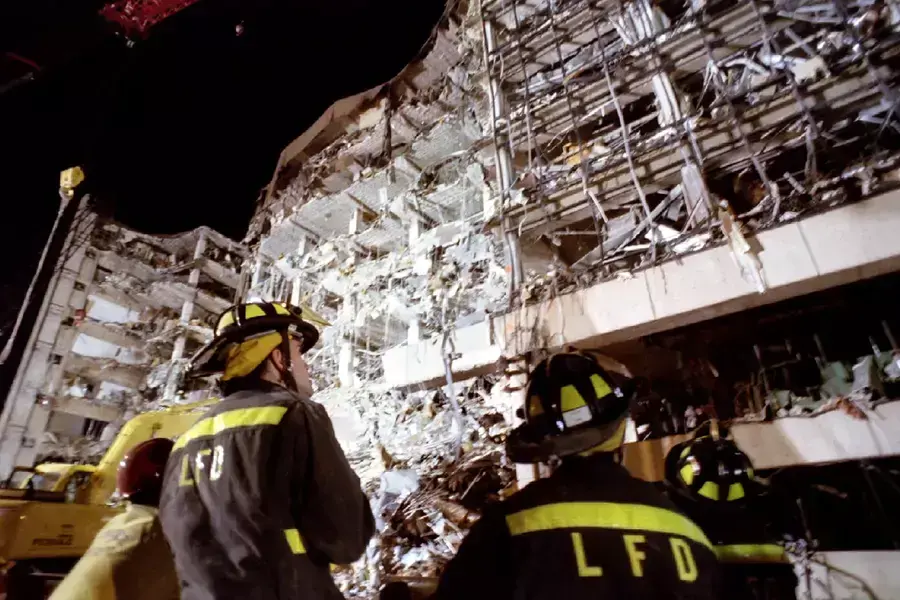The President’s Inbox Recap: Far-Right Terrorism

The latest episode of The President’s Inbox is live! This week, Jim sat down with Bruce Hoffman, Shelby Cullom and Kathryn W. Davis senior fellow for counterterrorism and homeland security at the Council, and Jacob Ware, a research fellow at the Council. They discussed their new book, God, Guns, and Sedition: Far-Right Terrorism in America.
Far-right Terrorism, With Bruce Hoffman and Jacob Ware
Bruce Hoffman, the Shelby Cullom and Kathryn W. Davis senior fellow for counterterrorism and homeland security at CFR, and Jacob Ware, a research fellow at CFR, sit down with James M. Lindsay to discuss the rise of far-right violent extremism in the United States and abroad.
Here are four highlights from their conversation:
1.) Far-right extremist violence is the most significant threat at home. Jacob noted that “as you look at... America over the past ten, fifteen years, basically every minority community has been a victim of one of these significant far-right terrorist attacks.” Far-right extremist violence can take many forms. Bruce noted that it can range from “sedition” to “targeted hate crimes” to “militant anti-government resistance that crosses the line into breaking the law.” Bruce cautioned, however, against attributing far-right extremist violence to any one group or organization.
More on:
2.) The far-right extremist movement is decentralized. Bruce argued that far-right extremism poses a significant challenge because it is “a vast movement with many different constituent parts, not a hierarchical single organization.” Jacob pointed to how extremist groups have followed a strategy known as “leaderless resistance," which former Ku Klux Klan leader Louis Beam championed. Beam recognized, as Jacob put it, “that groups when they organize are liable to be infiltrated and taken down by the federal government and by journalists, so it's smarter and more practical to actually organize outside of groups as a network and inspire lone acts of violence.” The non-hierarchical nature of far-right extremism makes such groups harder to track and counter.
3.) Technology has made it easier for far-right extremists to communicate with each other and to recruit new followers. Bruce noted that before the rise of digital technology individuals who “attempted to communicate with like-minded hatemongers…would get arrested by the federal authorities because when you send hate mail internationally, it goes beyond being a First Amendment right and it's a federal offense.” Bruce noted that “radicalization and recruitment by social media is now the bread and butter of every terrorist organization in the world.” Likewise, online gaming creates not only a new communication channel that is difficult to monitor but also a new radicalization process Jacob described as “gamification”—applying elements of online gaming like high scores to violent extremist acts like mass shootings. He added that gamification is particularly “frightening because it dehumanizes individuals. It demystifies the concept of killing, and it turns this form of violence into a video game.”
4.) Far-left extremism can also trigger political violence, though it has been less common. In June 2017, an individual tried to murder several Republican members of Congress at a baseball practice session ahead of the annual Congressional Baseball Game. House Majority Leader Steve Scalise was critically injured in the shooting. Bruce also acknowledged instances of “terrorism, vandalism, arson, and so on” from the far left. However, there are significantly more far-right militias than far-left militias in the United States. Bruce noted, “It's very hard to put any kind of number on the far left and the violently inclined far left, but at least historically, it has seen to be more street brawling, vandalism, and disorders, perhaps arson.” He added, it’s “nowhere near the same levels of arms, but this is something that bears watching.”
If you’re looking to read more of Bruce and Jacob’s work, check out their piece for Foreign Affairs, “American Hatred Goes Global.” It analyzes how the United States became an exporter of conspiracy theories, anti-government extremism, and other forms of hate crimes.
More on:
 Online Store
Online Store